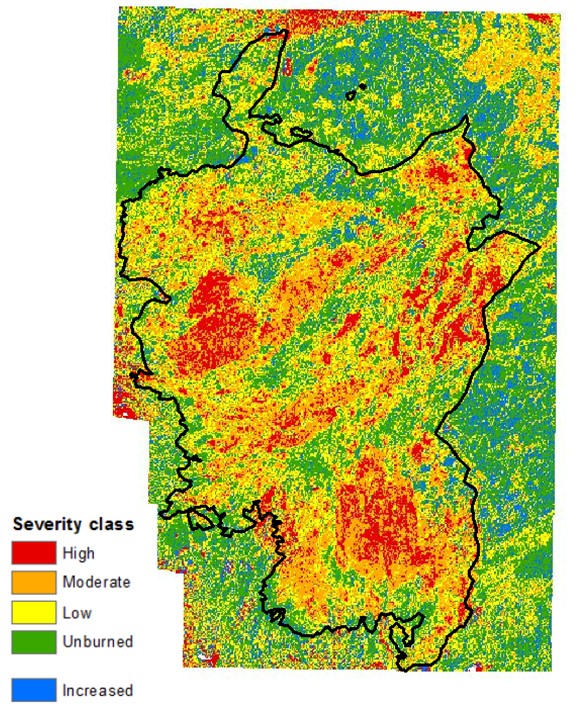This project addresses several questions using a unique opportunity to analyze prefire and postfire lidar remote sensing. The Pole Creek fire burned 27,000 acres through various forest types in October 2012 in Deschutes National Forest near Sisters, Oregon. Lidar data of the area had been fortuitously collected prior to the wildfire, offering a unique and high profile opportunity to investigate fire disturbance impacts and processes with high resolution data. Research efforts include comparison of lidar and Landsat-derived burn severity, carbon accounting and sequestration, fine-scale risk assessments, remote sensing of burn severity, and fuel treatment effectiveness using multitemporal lidar data, Landsat 8 burn severity (dNBR and CBI), and change-analysis techniques. Field crews from the U.S. Forest Service and the University of Idaho gathered data on the fire to quantify the fuel load, understory vegetation, and tree characteristics. The goal is to stratify sampling across the burn by severity classes and forest types to fully understand how prefire forest condition affected burn severity, and how various remote sensing techniques can be used to explain fire patterns and improve modeling of wildland fire and forest ecology.
PoleCreek.tif

Prefire and postfire lidar-derived burn severity for the Pole Creek fire.

